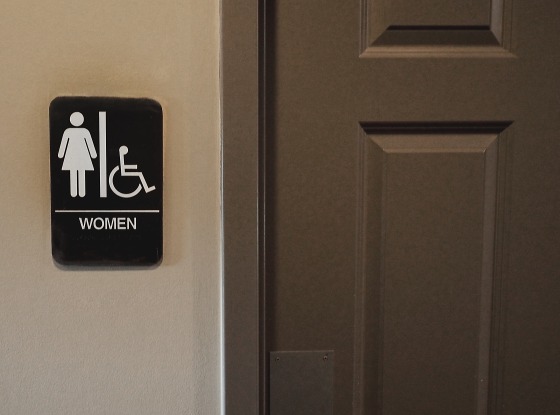Richard Cohen, the veteran Washington Post columnist, recently opined about the trans bathroom debates. He recalled how he witnessed similar hostility directed toward a Japanese woman by her Caucasian counterparts in an insurance office back in the Mad Men days of 1960. White women getting a lone Japanese colleague fired because they refused to share a bathroom with her? Really? How absurd does that sound today?
Cohen ended his column by saying: “History has since turned the righteous indignation of the women who wanted that Japanese file clerk fired into a ludicrous example of blatant prejudice. It will do the same to those who would limit the rights of transgender people.”
He’s right, and he’s not alone. Since North Carolina’s governor, Pat McCrory, brazenly signed HB2 into law in March, there has been an outpouring of cisgender support for trans people all across the country. Media personalities, including journalists, have challenged McCrory and his fellow Republicans, making fools of them on national television. Even Donald Trump has defended trans persons.
As Cohen points out, bathroom bigotry is not new. The locus of the bathroom has been at the center of all the civil rights movements of the past 70 years — most notably the African-American civil rights movement. The others include the Equal Rights Amendment battles, and even gay rights, which long focused on men’s bathrooms and showers, even as recently as during the repeal of “Don’t Ask, Don’t Tell."
Racial segregation in bathrooms was not only despicable, it was de jure, and you took your life in your hands if you violated that code. During the women’s and gay rights movements it was more of a vicious, fear-mongering set of talking points, as it is today with the trans movement (even in North Carolina, where the law has no enforcement mechanism and runs afoul of federal law). The threats, however, take their toll on the most vulnerable in the trans community.
A little history to the trans bathroom war experience: It began in my home county of Montgomery County, Maryland, in late 2007. After successfully (though temporarily) defeating a modernization of the sex-ed curriculum in the county’s renowned public schools in 2005, the forces of right-wing extremism were feeling their oats and turned to their next target: the gender identity law passed in November, 2007. I was then working for Councilwoman Duchy Trachtenberg, who was a hero in the eyes of the trans community for introducing the gender identity bill and then working it to unanimous passage.
Almost immediately, the group formerly known as Citizens for a Responsible Curriculum (and now renamed Citizens for a Responsible Government) launched a petition drive to put the law to referendum in the 2008 election. They ultimately failed when legal organizations and equality groups joined forces and bested them in the state’s highest court. Those involved with the effort included lead counsel Jonathan Shurberg, Lambda Legal and Basic Rights Montgomery.
Back then, as is the case today, the opposition attempts to portray trans women as male sexual predators sneaking into the ladies room to assault the wives and daughters of red-blooded American men. Of course, male sexual predators are men, not trans women. This point was made firmly by Assistant Attorney General Vanita Gupta just a few weeks ago, when she said “Trans women are women.”
The so-called Citizens for a Responsible Curriculum went to extremes in their behavior, which created the model for future campaigns. They allegedly dressed a man in an ugly blue dress and had him run past the cameras that were stationed in the Rio Sport and Health Club while they were conveniently holding a press conference highlighting the dangers of such behavior. They also had me charged with an ethics violation, which took more than two years of legal challenge until vindication.
It took a substantial amount of money and a lot of work from many volunteers, both demonstrators and legal advocates, but we prevailed. We also learned if you spend time talking to people in your community, you can win them over. For example, I was verbally harassed outside a local supermarket one Sunday by two elderly African-American women, but when I reminded them that they, too, had been subjected to a similar form of bathroom bigotry, they quickly apologized.
We also learned when people are reminded there are trans men as well as trans women, they look at the situation differently, realizing the opposition's stance would force some people who look like cisgender men to use the women's restroom. Remarkably, many in the broader LGBT community have not yet learned this lesson. Portrayals of trans men in women’s bathrooms have been primarily the work of vigilante trans men tweeting out their selfies, with the occasional television interview, such as this one of Masen Davis on MSNBC. Only very recently did a new donor-led advocacy group, Freedom for all Americans, broadcast such a trans man video, and that one was quickly followed by a touching video of trans children from the recently formed Trans United Fund.
Despite some recent setbacks for the transgender community, a recent poll found 40 percent of registered voters in the U.S. thought transgender people should be allowed to use the bathroom that corresponds to their gender identity, versus 31 percent who thought they should be legally barred from doing so. The transgender community and its allies are living through a remarkably teachable moment. We’re winning, and we should run up the score.
Dana Beyer, M.D., is an LGBT rights advocate and a retired eye surgeon. She is currently the Executive Director of Gender Rights Maryland, Board Chair of Freedom to Work and Vice Chair of the Civil Rights Coalition of Maryland.

